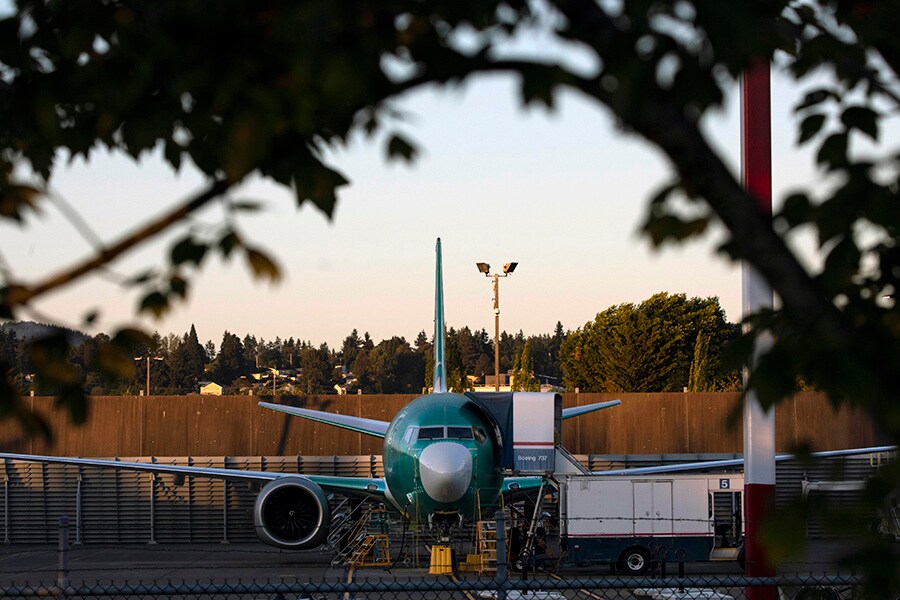
Boeing to stop making 737 Max jets, for now
The decision, after a two-day board meeting, is the culmination of the worst crisis in the company's 103-year history and follows two crashes that killed 346 people
 A Boeing 737 Max8 jet at the Boeing Plant in Renton, Wash., on July 21, 2019. Boeing is moving closer to a decision to further reduce production of the 737 Max or bring the factory to a temporary halt as it continues to grapple with fallout from two deadly crashes that have left the jet grounded for nine months
A Boeing 737 Max8 jet at the Boeing Plant in Renton, Wash., on July 21, 2019. Boeing is moving closer to a decision to further reduce production of the 737 Max or bring the factory to a temporary halt as it continues to grapple with fallout from two deadly crashes that have left the jet grounded for nine monthsImage: Ruth Fremson/The New York Times
Boeing next month will temporarily stop making the 737 Max, its most popular passenger jet, the company said on Monday.
The decision, after a two-day board meeting, is the culmination of the worst crisis in the company’s 103-year history and follows two crashes that killed 346 people. Boeing had repeatedly signaled that the plane would be cleared to return to the sky before the end of the year.
Boeing’s decision could ripple through the American economy. The company is America’s largest manufacturing exporter and it views the 737 Max as critical to its future.
This new model of its workhorse 737 was begun under pressure in 2011 as the company sought to fend off competition from its European rival, Airbus. But after the two crashes, prosecutors, regulators and two congressional committees are investigating whether Boeing overlooked safety risks and played down the need for pilot training in its effort to design, produce and certify the plane as quickly as possible.
One focus for investigators is a software system known as MCAS, which was created for the Max and was found to have played a role in both crashes. Shortly after the first crash, off the coast of Indonesia in October 2018, Boeing promised a fix to MCAS. Then the second crash happened in March, in Ethiopia.
The plane was grounded days later, and Boeing has still not delivered a software fix for MCAS that has met federal approval. And there is still no timeline for the plane’s return to the air.
©2019 New York Times News Service





